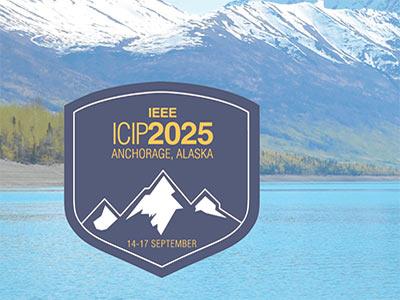
- Read more about CROSS-DOMAIN VIDEO OBJECT DETECTION VIA AUGMENTED-SHOT FINETUNING
- Log in to post comments
This document contains supplementary material for the ICIP PAPER.
ICIP_SUPPm.pdf
- Categories:
 39 Views
39 Views
- Read more about Supplementary Material for PIT-QMM
- Log in to post comments
Appendix for PIT-QMM: A Large Multimodal Model for No-Reference Point Cloud Quality Assessment. Abstract of full paper:
- Categories:
 19 Views
19 Views
- Read more about Video - 3DGS_result_from_16.40_and_17.27
- Log in to post comments
The video represents the Sheep-Sculpture rendering at 360 degrees of view by the original 3DGS method from a dataset that contains the 16:40 and 17:27 time intervals images.
- Categories:
 23 Views
23 Views
- Read more about Video - Ours_estimated_16.59_from_16.40_and_17.27
- Log in to post comments
The video represents the Sheep-Sculpture rendering at 16:59 from 360 degrees of view by our time-dependent modeling method from a dataset that contains the 16:40 and 17:27 time intervals images.
- Categories:
 26 Views
26 Views
- Read more about SUPPLEMENTARY MATERIAL FOR BLURBALL
- Log in to post comments
Motion blur reduces the sharpness and clarity of fast-moving objects, making object detection significantly more challenging. In sports, this effect often transforms a ball from a distinct dot into a streak, complicating its precise localization. The standard labeling convention defines the ball’s position at the front edge of the blur streak, introducing asymmetry into the detection process and disregarding valuable motion blur information that directly correlates with velocity.
- Categories:
 120 Views
120 Views
- Read more about GLOBE: Gaussian-Based Localization with Orthographic Bird's-Eye-View Registration
- Log in to post comments
Gaussian Splatting (GS) was originally designed for realistic rendering of novel views, but its anisotropic 3D Gaussian representation makes it particularly promising for visual localization and SLAM. Recent work as GaussReg has explored loop closure detection via Gaussian registration, improving map consistency and accuracy. However, achieving reliable loop closures remains an open problem, especially in complex environments.
- Categories:
 64 Views
64 Views
- Read more about Supplementary Materials for iHDR
- 1 comment
- Log in to post comments
This is the Supplementary Materials for iHDR: Iterative HDR Imaging with Arbitrary Number of Exposures
- Categories:
 50 Views
50 Views
- Read more about Supplementary Material: Unraveling Vanishing Point and Calibrating Tiny Objects for Semantic Scene Completion
- Log in to post comments
Semantic Scene Completion (SSC) aims to jointly predict semantic categories and 3D occupancy of a scene from coarse inputs, which is crucial for providing reliable perception in autonomous driving. In this paper, we enhance existing SSC models by unveiling the vanishing point region, specifically addressing challenges posed by tiny objects and voxels distant from the monocular camera. At the core of our method, we propose the Vanishing Point Aggregator (VPA) to prioritize features in high-density central areas.
- Categories:
 16 Views
16 Views
- Read more about UNRAVELING VANISHING POINT AND CALIBRATING TINY OBJECTS FOR SEMANTIC SCENE COMPLETION
- Log in to post comments
Semantic Scene Completion (SSC) aims to jointly predict se-
mantic categories and 3D occupancy of a scene from coarse
inputs, which is crucial for providing reliable perception in
autonomous driving. In this paper, we enhance existing SSC
models by unveiling the vanishing point region, specifically
addressing challenges posed by tiny objects and voxels dis-
tant from the monocular camera. At the core of our method,
we propose the Vanishing Point Aggregator (VPA) to prior-
itize features in high-density central areas. The proposed
Supplementary.pdf
- Categories:
 9 Views
9 Views
- Read more about SUPPLEMENTARY MATERIAL: UNRAVELING VANISHING POINT AND CALIBRATING TINY OBJECTS FOR SEMANTIC SCENE COMPLETION
- Log in to post comments
Semantic Scene Completion (SSC) aims to jointly predict semantic categories and 3D occupancy of a scene from coarse inputs, which is crucial for providing reliable perception in autonomous driving. In this paper, we enhance existing SSC models by unveiling the vanishing point region, specifically addressing challenges posed by tiny objects and voxels distant from the monocular camera. At the core of our method, we propose the Vanishing Point Aggregator (VPA) to prioritize features in high-density central areas.
- Categories:
 46 Views
46 Views